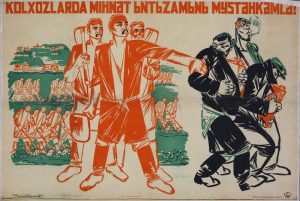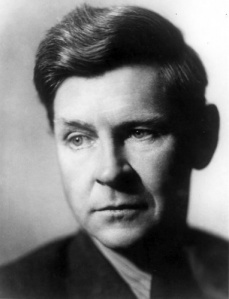Close Reading Paper on “Rainy Day Revolution No. 39”
In “Rainy Day Revolution No. 39” the Italian science fiction writer Luigi Cozzi imagines a dystopic future in which population controls and party politics have been taken to hideous extremes. Cozzi’s story follows Lester Aharddaysnight as he braves a journey on the underground, a trip fraught with danger at every turn. On the train Lester meets and befriends another man, Judas Imabeliever. When he reaches his stop, Lester prepares to jump off the train where the story ends ambiguously as to whether he is survives this jump or not. One of the major thematic conflicts in this story is the struggle of the individual against the bureaucratic system they inhabit. One way this is manifested in “Rainy Day Revolution” is through the tensions within the narrative over the men and masculinity. In this story Cozzi presents a society pervaded with individual men who have been robbed of their perceived masculinity by the mechanistic bureaucracy of the Parties. In this paper I will argue that Cozzi presents the struggle between individual and oppressive society through the theme of masculinity and lost masculinity in relation to control over female bodies. In order to argue this I will look at three main ways that Cozzi accomplishes this; firstly, through the advertisements at the beginning of the story and Lester’s reaction towards them; and secondly through his description of the sacrifice of a female victim to the underground train by robotic workers.
Cozzi brings the theme of sex and especially the sexual power of women into this story immediately in a number of ways. Firstly, he chooses to preface the story with a quotation which discusses humanity’s desire to conquer new worlds. Interestingly for our purpose, the quotation describes the planet as an “oyster”, a popular symbol for the reproductive power of the female womb (Cozzi, 197). The story then begins properly with a string of advertisements which directly appeal to masculinity, and especially masculinity tied into male sexual activity. The fact that these adverts are described as essentially, “gigantic women continuously stripping”, overtly indicates their relationship with masculinity through male sexuality, and moreover, male sexuality as indicated by the control over female bodies and sexuality. An advert for cigarettes appeals to cigarettes as a masculinizing experience, claiming that it “wakes your sleeping sex” (Cozzi, 197). The name of the cigarette brand, “Sexy-x” also points to the theme of masculinity as the extra “x” links itself to the “y” ending of sexy. This XY pairing, identical to the sex-determining chromosome pairing for men, further links this advertisement to a sense of masculinity. The masculinity promoted by these advertisements is explicitly linked to sexual domination and control over women by the third advertisement, the product in which promises, “to let you own her without troubles” (Cozzi, 197). However, Cozzi subtlety suggests a pervasive anxiety over a missing masculinity through these advertisements, the fact that these advertisements exist and call for re-masculinization, “wakes your sleeping sex”, suggests a level of anxiety surrounding male virility (Cozzi, 197).
In addition to the advertisements themselves, Cozzi’s description of Lester’s reaction to them further highlights the conflicts over masculinity that take place within this story. Cozzi writes, “It was hard to resist the fascination of those gigantic women continuously stripping” (Cozzi, 197). Here I would argue that Cozzi uses a moment of free indirect discourse, rare within this story, to have Lester’s perspective invade the normally objective narrative voice. Through this technique Cozzi highlights Lester’s desire to stare at the, essentially pornographic, advertisements. In doing so Cozzi highlights Lester as a stereotypically masculine figure who seeks to possess the female bodies on these advertisements through voyeurism. Cozzi continues however, “as soon as they [the women] were entirely naked, their voluptuous bodies were covered with these flashing letters” (Cozzi, 197). Thus, the advertisements, as described by Cozzi, essentially act as a sexual inhibitor for Lester, bringing him to the brink of a sexual climax, here imagined as the moment where these women are totally naked, and then occluding the final image. In this way the advertisements, which are described by Lester as, “among the mightiest weapons of the Parties”, through their ability to control these female bodies, are shown to own them. The occlusion of the female body, and thereby their sexuality, by the Parties thus becomes a moment of metaphorical castration for Lester, in which he is denied his traditional masculinity.
In addition to the struggle over female bodies described in Cozzi’s description of the advertisements, another key moment of this type occurs later in the narrative when a woman is sacrificed to the underground train by robotic workers. I would argue that the robot’s capture and killing of the woman is described almost like a rape scene. Cozzi describes their actions, “they rapidly stripped the girl’s dress with their sexless fingers, skimmed her skin that shuddered and withdrew at the contact of those freezing claws” (Cozzi, 198). Cozzi’s description of how the robot’s operate the woman gives this scene heavy sexual undertones. This is furthered by the description of her body, “[light] staining her breast with violet lightning and lighting sensual flames on her abdomen” (Cozzi, 198). Cozzi’s choice to focus on the physical body of the female victim, emphasizes how the robot’s murder of this victim should be seen as a possessive, moreover a sexually possessive, action. Despite the overtly sexual nature of this murder, Cozzi chooses to describe the robots as, “sexless” (Cozzi, 198). In doing this, I would argue that Cozzi informs the reader that we are seeing this murder from the perspective of a human, male, voice, not that of the robots. The sexual description of the woman therefore becomes another example of how female bodies are possessed by the machine-like system of bureaucracy, and then how men are actively denied expressing their traditional masculinity through possessing female sexuality.
Overall therefore, to conclude, I would argue that Lenard in “Rainy Day Revolution No.39” represents a man that has been metaphorically castrated by the bureaucratic system he inhabits. Through the use of female bodies and sexuality in this text Cozzi repeatedly shows how the society in this imagined future controls individuals living inside it, either through physically possessing them or by controlling the most intimate details of their lives. Ultimately this reading of the text feeds into the wider conflict of individuality vs. the state present in this story.


